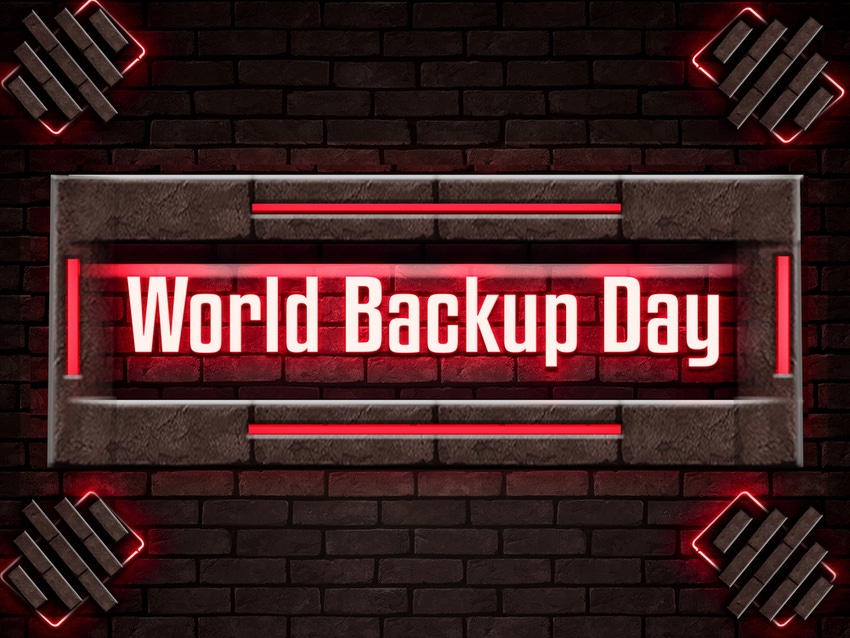Backup and disaster recovery solutions aren’t just for when technology fails.
March 31, 2021

By Jon Lucas

Jon Lucas
By all rights, World Backup Day shouldn’t exist anymore. Some IT professionals and business leaders would recoil at the thought of having only one day each year when businesses thought about their backup and disaster recovery strategies. Surely every day should be World Backup Day? March 31st, however, still holds a place on boardroom calendars worldwide and serves a valuable purpose — to remind organizations of the increasing number of malicious and environmental risks that threaten their data every day.
The focus is, understandably, on the important act of backing up data. But how many businesses consider where their data is actually being kept? Let’s take a look at the importance of diversifying backup locations, including the increasing importance of utilizing secondary environments to maintain business continuity in the face of disaster. And let’s start by looking at the picture as a whole.
Understanding the Risk Landscape
Backup and disaster recovery solutions aren’t just for when technology fails. While this may have been the case pre-cloud, they are now a crucial line of defense against malicious bad actors, the propagation of malware and even the unpredictable forces of nature. The U.S. environmental agency FEMA has produced considerable research into the impact of the environment on business continuity. They found that nine in 10 businesses fail within a year if they are unable to get back up and running within five days after a disaster such as a fire, earthquake or flood. Disaster recovery isn’t just about damage mitigation either. It’s also about preparedness. And little could have prepared businesses for a global pandemic that stopped the economy in its tracks. Data breaches exposed 36 billion records in the first half of 2020 alone, signaling a spike in the rate of cyberattacks as bad actors sought to take advantage of companies’ increased vulnerability during the pandemic.
Put simply, the risk landscape is unpredictable and it moves quickly. If backup and recovery isn’t a part of your overall security strategy, the odds are stacked heavily against you in 2021.
The Importance of Diversifying Your Backup Portfolio
The act of backing up data is what World Backup Day is all about, and that’s fine. If the day raises awareness and encourages a handful of businesses to up their data backup efforts, that’s a definite win in anyone’s book. There’s more to it than that, however. We’ve all heard the old adage that “a problem shared is a problem halved,” and risk is much the same. The less pressure you put on one single backup location, the safer your business will be in the long run.
Many business continuity experts would argue that having one backup location in close proximity to your business is a recipe for disaster. One single fire or unexpected event could leave your business in ruin. Even a power outage caused by a lightning strike at your sole backup location could render your business vulnerable. It could knock out its backup system for hours, days or even weeks. Just this month, one of Europe’s largest cloud providers, OVHcloud, experienced a fire at its SBG2 data center in Strasbourg. All four data centers at the site were impacted by the fire, which took six hours and 100 firefighters to bring under control. Customers were heavily impacted, with millions of websites going offline.
What Can Businesses Do?
So what can businesses do to spread the risk of something like this happening to them? Splitting primary data and backups into different racks on different sides of a server room has become common practice, but it’s not enough. While owning two separate physical locations in which to store duplicate backups is certainly the most desirable option, it’s simply not financially feasible for most businesses. However, there is one way in which this kind of security can be easily achieved. Rather than buying or renting additional server space and shouldering the financial burden themselves, businesses can diversify their backup portfolio by working with a managed hosting provider who uses a variety of data center locations. This helps to spread the risk in a cost-effective and manageable way.
Ultimately, there is no “one-side-fits-all” solution, and budget will be the determining factor for many businesses. So while it could be argued that World Backup Day shouldn’t be necessary, the disruptive events of the past 12 months have reminded us that it should remain a very important fixture on boardroom calendars around the world.
Jon Lucas, along with his business partner Jake Madders, founded U.K.-based Hyve Managed Hosting in 2001. Since then, in his role as director, Lucas has facilitated the growth of the company from a small startup to a hugely successful managed cloud hosting company with a global customer base. With a background in software development, he has spent time at Crédit Agricole, Goldman Sachs, JPMorgan Chase and M&C Saatchi during his career.
Read more about:
MSPsYou May Also Like
